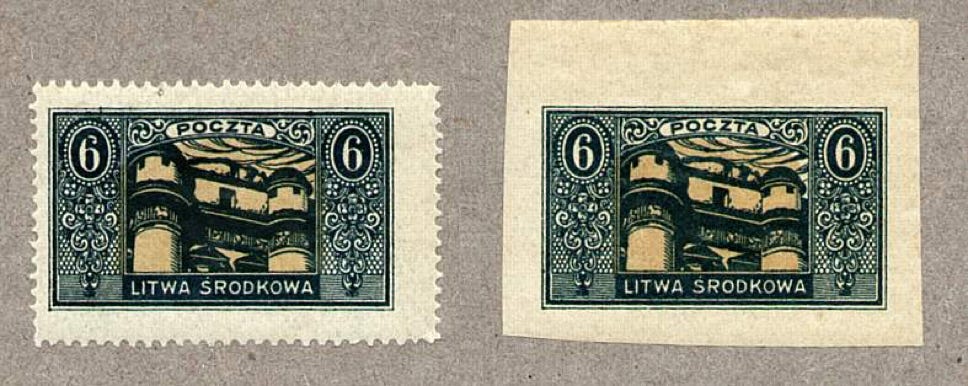Central Lithuania 1921 – Poczobut Observatory
The first astro-stamp of the 20th century comes from Central Lithuania, a small state with a short and troubled history. It consisted of an area in the southeast part of Lithuania around the city of Vilnius which was seized by the Poles in 1920 and given the name Central Lithuania (in Polish, Litwa Środkowa). It issued fewer than 50 recognized stamps in 1920–22 before being absorbed by Poland. The area eventually transferred back to Lithuania in 1939.
This stamp from 1921 depicts Poczobut Observatory on top of the main Vilnius University building. Founded in 1753, it was the fourth observatory in Europe and the oldest in Eastern Europe. It was also the first observatory to appear on a stamp. The observatory is named after the Lithuanian astronomer Martin Poczobut (1728–1810) who became its director in 1764, serving for 44 years. His positional measurements of Mercury were used by the French astronomer J.J. de Lalande to compute that planet’s orbit. Poczobut is also of note for having invented the constellation Poniatowski’s Bull, composed of stars in Ophiuchus and honouring King Stanislaus Poniatowski of Poland. The constellation was not generally adopted, and has long since vanished from maps of the sky. For a modern picture of the observatory, and more about Poczobut, click here.
The stamp comes in two versions, perforated and imperforate; the imperforate stamps were cut from a sheet by scissors, as in the example above.
SG number
Face value
Colour
39a
6 m
Buff and green
39b (imperforate)
6 m
Buff and green
